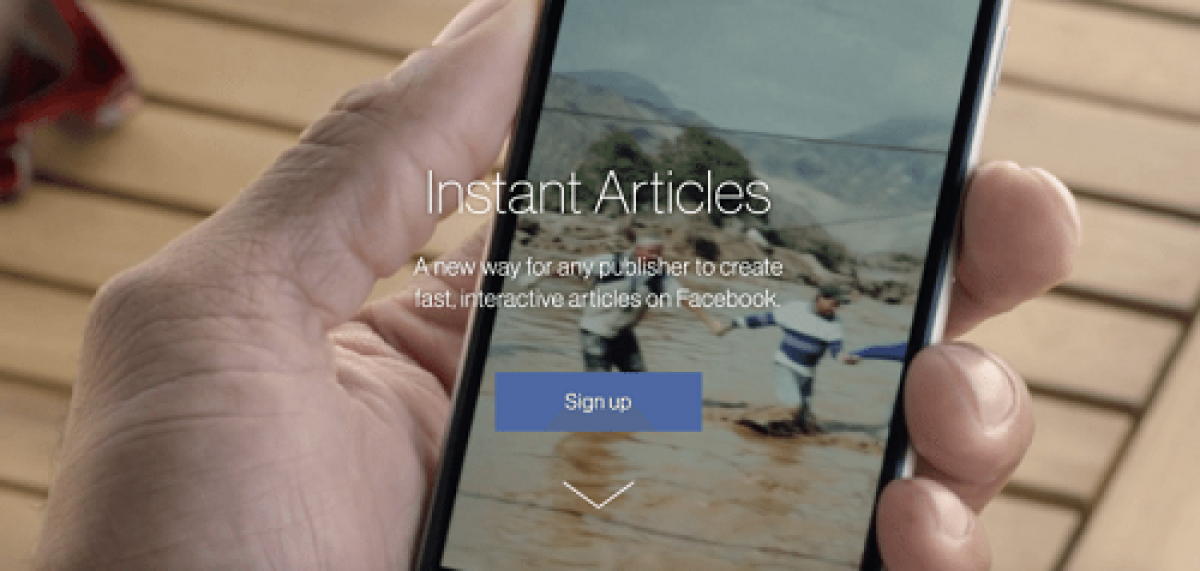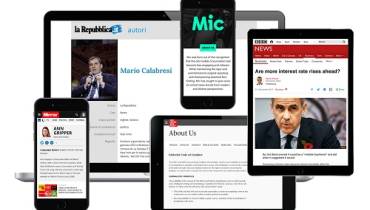How Publishers are Using Facebook Instant Articles to Grow Their Businesses

In February 2016, Facebook announced that Instant Articles (IA) were being opened up to all publishers to keep users on the social platform longer. Publishers and marketers across the board took to IA with cautious enthusiasm. A year since Instant Articles was opened up to everyone, enthusiasm has cooled off even though publishers are still keen to show goodwill to Facebook’s IA initiative.
What Exactly Is Instant Articles?
Instant Articles is essentially a Facebook-native publishing platform available to anyone with a Facebook Page. Instant Articles allows you to directly host articles on Facebook and tell rich stories in a branded and customizable article format that renders fast on mobile.
“Publishers of any type, anywhere in the world can deliver an incredibly fast and immersive reading experience for people on Facebook,” writes Facebook on the company’s Instant Article landing page.
Touted as a game-changer for mobile reading experience, Instant Articles load up to 10 times faster than normal articles, which can help you retain more of your prospects. Even those articles with complex video and interactive maps load super fast on mobile when users click on them because readers stay on Facebook rather than follow a link to another site.
The Facebook publishing platform includes a host of interactive features that help your IA stories come to life on mobile, including tap-to-zoom image galleries and auto-play video. You can also customize your Instant Articles style template to reflect the look and feel of your brand, and use in-house or standard third-party web analytics tools like Google Analytics to track traffic to your Facebook Instant Articles.
Monetization of Instant Articles is also possible on the platform itself, which provides an added avenue for businesses to monetize their content.
Monetization of Facebook Instant Articles
Facebook has been able to lure big publishers like the Washington Post, the New Yorker and National Geographic to experiment with IA by giving them publishing terms too good to ignore. Some of the incentives offered that might also appeal to you and your business, include:
- Revenue. Facebook gives publishers 100 percent of the ad revenue if the publisher sells the ads, and only take a 30 percent cut if the ads are sold through the Facebook network.
- Control. Publishers are in complete control of Instant Articles they post, which can also run on the publisher’s own site without issue. This essentially means publishers can use Facebook Instant Articles as an alternative platform to deliver a superior experience for their readers coming from Facebook—without sacrificing ad revenue.
- Visibility. The giant social network is said to give Instant Articles (signified with a lightning bolt) the royal treatment in the News Feed with its EdgeRank algorithm.
But, despite all these great offers and its suite of easy-to-use multimedia features, IA seems to have hit a snag. A number of publishers are dissatisfied that Instant Articles pages aren't producing instant income.
Instant Articles Not Meeting Publisher Expectations
Many marketers and publishers, including some New York Times newsroom veterans, were skeptical of IA from the beginning. The fear was that Facebook’s IA platform could become more of a destination than their own sites for the work they produce, drawing away readers and advertising. This fear has somewhat come true for some publishers.
The New York Times was one of the first publishers to pilot Instant Articles. But, it stopped using Instant Articles after a test last fall that found that links back to the Times’ own site monetized better than Instant Articles, Kinsey Wilson, the Times evp of product and technology told Digiday. People were also more likely to subscribe to the Times if they came directly to the site rather than through Facebook, he said. Thus, for the Times, IA simply isn’t worth it.
Cosmopolitan was also among the first Hearst brand to launch IA in October 2015. Now, Hearst is absent from the program, having determined the monetization isn’t paying off. Business news sites Forbes and Quartz are also absent from Instant Articles, having also found monetization lacking.
The general feeling is that IA doesn’t monetize as well as old-fashioned links that take readers back to the publisher’s own site. Publishers have also struggled to see a strong engagement benefit to the program.
Facebook Responding to Publishers Concerns
Facebook has, however, been trying to be more responsive to publishers’ concerns and improve Instant Articles. The social network recently launched call-to-action units that let publishers display messages within Instant Articles stories inviting people to sign up for a newsletter or “like” their Facebook pages. It’s also testing mobile app install promos and trial subscription signups within Instant Articles.
At a time when there are upheavals at publishing platforms like Medium, improvements to Instant Articles could make it worthwhile to sign up and give it a try. This is especially true if you are looking to reach a bigger audience for your business, considering that Facebook already has more than 1.4 billion active users worldwide and captures more attention of mobile users.
Besides, just because big publishers find IA wanting does not mean smaller publishers also have to find it wanting. For content marketers and publishers that aren’t heavily dependent on subscriptions as the Times is, or that don’t depend heavily on lucrative direct ad sales business models, Instant Articles may still make sense because the user experience is better. Consumers win by getting better user experience and your brand perception gets a boost.
Slate, an early Instant Article call-to-action unit tester, has actually given enthusiastic testimonials about the product, saying it drove 41 percent of new newsletter signups. This bump in new newsletter signups thanks to the IA call-to-action units was significant for Slate and could be significant for your business too if employed.
“For us, it gives us a chance to promote other things we produce to new audiences,” Slate senior product manager Chris Schieffer said.
See Also: How Publishers are Adapting Some of Their Stories for Medium.




















